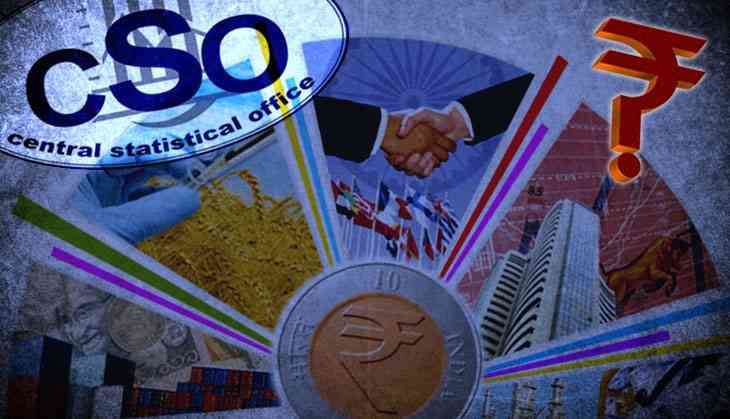Note ban no match for India's growth story. Is it really so?

Some base effect phenomenon – a statistical issue that magnifies the growth – and some data juggling keeps India’s tag of the fastest growing economy in the world intact for now.
GDP data released Monday has given the Narendra Modi government one more reason to smile. After demonetisation, policymakers had maintained that economic growth would not suffer and even it did slow down, it would be a temporary hit.
The government's hypothesis was validated Tuesday as the Central Statistics Office estimated the GDP growth for October-December quarter at 7%.
It was a positive surprise for most economists as everyone was pegging the growth at 6-6.5%, taking into account the slowdown in consumption in the country.
Also Read: Modi's note ban: How BJP is struggling to defend its reckless boss
The CSO, in its second advance estimate, for the full year of 2016-17 estimates the Indian economy to grow by 7.1%, as estimated by other government agencies and the Reserve Bank of India. The GDP growth in 2015-16 was 7.9%
However, the details raise questions. The CSO estimates the agriculture growth at a whopping 6% in the third quarter. It further estimates private consumption growth at 11% in third quarter.
The bases of both these estimates are questionable. It is a known fact that consumption demand was hit hard by demonetisation. Car sales, 2-wheeler and 3-wheeler sales, and durable and fast moving consumer goods purchases have all reported a decline in the October-December quarter. However, the data captured by the CSO does not reflect the same.
Indeed, even before demonetisation was announced, the Indian economy had been slowing down. The biggest worries were slowing private consumption and lower corporate investment in new projects. It was said that government spending in infrastructure and social areas was driving the economy. Yet, the CSO data claims that private consumption drove the growth in the last quarter – at a time when 86% of the currency was abruptly taken out of circulation. It's unbelievable, but that is what the data released by CSO suggests.
The CSO has pegged private final consumption at 58.7% of the GDP in third quarter, the highest in the last eight quarters.
Agriculture growth has been estimated at 6% in third quarter. And the CSO suggests that it is based on crop production estimates provided by the ministry of agriculture. It should be recalled that demonetisation was announced just when the Kharif harvest was arriving in mandis. As a result, some of the major mandis could not operate in the absence of cash. Even vegetable prices had crashed, showing stress sales by farmers.
The rabi harvest will not be reflected in the October-December period as most new crops would have hit the market only in the second fortnight of January. It seems that the CSO may have to revise its agriculture growth estimate of 6% downwards in the coming days.
Probably a very low growth (contraction of 2.2%) in third quarter of 2015-16 could have helped propel agriculture growth to 6% in the current estimates.
The biggest reading from the CSO data is the sharp reduction in the Gross Value Added (GVA) as against the GDP. GVA is the total production minus taxes. The GVA for the last quarter has been kept at 6.6% as against 7% in the previous corresponding quarter. For the full year of 2016-17, the GVA is 6.7% compared to 7.7% a year earlier.
Also Read: Bundelkhand farmers on note ban: We survived the drought but Modiji broke our back

